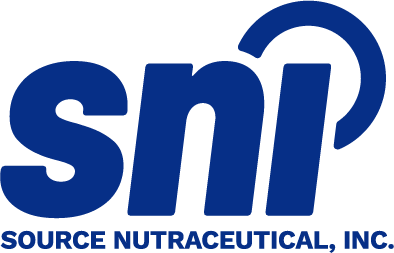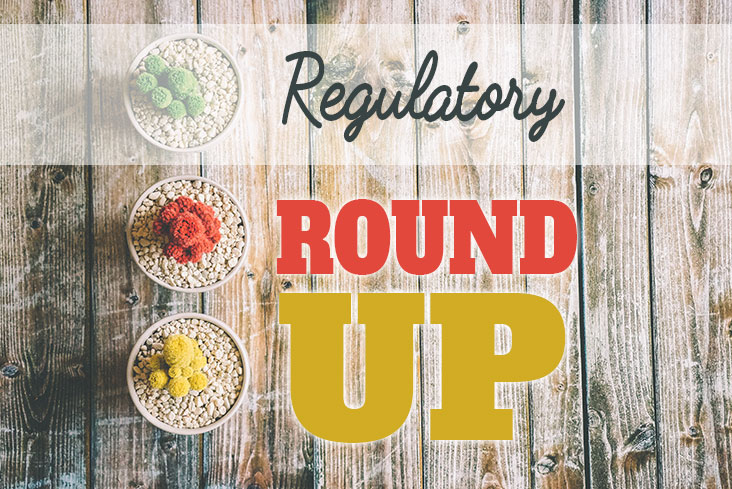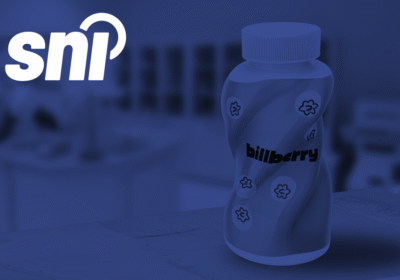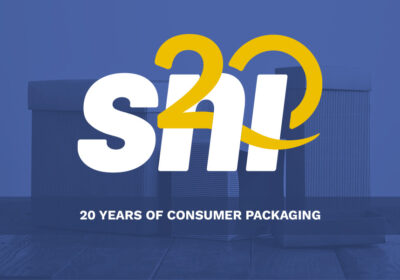As we settle into 2017, Source has been reflecting on the many regulatory changes that have taken place in the Canadian marketplace over the past few months. Source recognizes that it can be challenging to keep up to date on all of these important regulatory changes. Our team of regulatory and compliance experts continue to monitor new government policies, and are also evaluating the subsequent impact(s) that these regulatory changes will have on our clients’ businesses.
In light of the numerous recent developments impacting the Canadian health food and product sectors, we thought it would be helpful to provide a high-level summary of all the latest regulatory initiatives. Read below to refresh yourself on the latest in Canadian regulatory affairs!
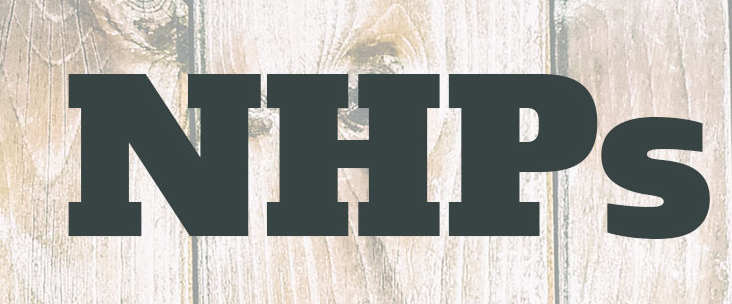
Natural Health Products (NHPs)
Health Canada Proposed Changes to the Regulation of Self-Care Products (September, 2016)
In September of 2016, Health Canada released a highly controversial proposal which, if formally implemented, will lead to major changes to the regulation of self-care products in Canada. The Proposal for Self-Care Products aims to address consumer confusion regarding this broad category of health products, which includes Natural Health Products (NHPs), cosmetics, and non-prescription drugs.
In its consultation document, Health Canada proposed a new approach to the regulation of products “of a similar risk”, and outlined differing regulatory processes and standards of evidence for low-, medium- and high-risk health products. Products deemed to be low risk, including a large number of existing NHP ingredients, would be de-regulated, and no longer able to bear an NPN on their labels. This was a major concern to industry, as the NPN is a globally recognized symbol of quality. Medium- and high-risk products would continue to undergo Health Canada review, but would need to provide “scientific evidence” to support any proposed health claims.
Health Canada released their summary of industry’s comments in a “What we heard” report, on March 31, 2017. A total of 3,567 responses were received during the consultation (17% of responses from industry, and 73% of responses from consumers).
The consultation document and questionnaire centered on the following themes:
- Risk-Based Approach to Self-Care Products;
- Health Canada Approval of Health Claims (Only);
- Use of a Disclaimer;
- Unique Product Identifiers;
- Compliance Monitoring and Addressing Inconsistencies in Post-Market Powers; and
- Suggestions for Modernizing the Regulation of Self-Care Products.

Health Canada acknowledged mixed feedback on multiple aspects of the consultation. Concerns regarding the Self-Care Proposal were focused on the potential negative impacts regarding affordability, availability, and diversity of NHPs in the Canadian marketplace. Many respondents also voiced concern that the proposed disclaimer (citing lack of Health Canada review of label claims) for low-risk NHPs could entirely discredit the product category. Conversely, feedback in support of the Proposal included the potential for improved consistency and reliability among product categories; a lesser portion of products bearing potentially ‘misleading claims’, and improved recall powers, where necessary. Health Canada also acknowledged varying opinions on the potential for a product label identifier for self-care products, particularly regarding potential interaction with the existing NPN identification system.
Health Canada will be hosting a series of cross-Canada in-person consultation sessions, as well as a web-based information session, entitled “Developing the Self-Care Framework”. Source’s Regulatory Affairs Team will be attending the in-person session in Toronto (May 3) as well as participating in the online webinar (May 5). Click here to see the full schedule of consultations sessions, and watch for our recap of the events in a future reSOURCE publication!
RORB established, halts NHP Sampling Initiative
In early 2016, Health Canada’s Health Products and Food Branch Inspectorate (HPFBI) was transformed into the Regulatory Operations and Regions Branch (RORB). Despite the name change, the mandate of this branch will remain the same, with RORB continuing to lead ongoing compliance and enforcement initiatives in the Canadian NHP sector.
In the fall of 2016, RORB made waves in the industry with the decision not to move forward with a pathway to allow for sampling of NHPs. This was a highly contested decision, as sampling is permitted for non-prescription drugs, and both categories of health products are governed by the Natural and Non-Prescription Health Products Directorate (NNHPD). Despite protests from several industry associations, RORB halted the initiative, citing a focus on moving forward with major aspects of the proposed Framework for Self-Care Products.
NNHPD updates Pre-Cleared Information
Throughout the course of 2016, Health Canada’s Natural and Non-Prescription Health Products Directorate (NNHPD) consulted on new and existing NHP monographs (selenium, white kidney bean extract, multi-vitamin/mineral product monograph), and updated previously published monographs and abbreviated labelling standards (Acne Therapy Products, and Alpha-lipoic acid, respectively).
NNHPD also recently published two monograph revisions due to safety concerns raised in a published Safety Summary Review of over-the-counter topical pain relievers containing menthol, methyl salicylate or capsaicin. These revisions to existing monographs on Counterirritants and Medicated Vapours were published mid-March, 2017. Source anticipates that future changes to existing pre-cleared information will likely also be on the horizon, as Health Canada continues its process of develop Safety Summary Reviews for the NHP ingredients.

Foods
Major changes ahead for Canadian food labelling rules
In December of 2016, Health Canada published revised Food and Drug Regulations for Nutrition Labelling, Other Labelling Provisions and Food Colours, in Canada Gazette, Part II. These updated regulations will complement the recent release of Canada’s Healthy Eating Strategy (October, 2016), and will help consumers make more informed food choices. As a result of the updated nutrition labelling requirements, every food label in Canada will require changes.
Under the approved changes for nutrition labelling (December, 2016), certain foods containing fruits and vegetables may be able to carry a new health claim related to reduced risk of heart disease. This is in addition to another new Health Canada-approved health claim (May, 2016), for triglyceride lowering, for certain foods containing omega-3 fatty acids EPA (Eicosapentaenoic Acid) and DHA (Docosahexaenoic acid).
Click here for more information on the recently approved changes to food labelling, and how Source can help evaluate your food products to see if you qualify for additional claims under the new regulations.
Three other important food industry consultations were initiated in the fall of 2016:
- November, 2016: Health Canada released a Proposal to Eliminate the use of Partially Hydrogenated Oils (PHOs) for a 3-month consultation period. Consumption of PHOs has been linked to risk of heart disease, and as such, Health Canada is looking to eliminate them from the Canadian food supply. Also in November, a proposal to launch front-of-package labelling was released by Health Canada. This would involve additional labelling requirements for foods containing greater than 15% of the daily value of sugar, sodium, and/or saturated fats.
- December, 2016: The Canadian Food Inspection Agency (CFIA) launched Phase III of its ongoing industry consultation related to modernizing non-safety related aspects of food labels. The changes proposed in this 90-day industry consultation could result in additional mandatory changes to food labelling in the future, including best before date marking, country of origin declaration, and ingredient list class names.
Source will keep an eye on these important industry consultations, and will continue to update our clients as details of required changes are confirmed by Health Canada and the CFIA.

Regulatory Developments Impacting Organic and Genetically Modified Foods
Organic foods and genetically modified foods remain two of the hottest topics in the North American health food sector. Two regulatory developments occurred in the fall of 2016 that impacted these two product categories.
- November, 2016:
- Revised Canadian Organic Standards came into effect, following intense review by the Organic Federation of Canada. Under the Organic Product Regulations, all industry members seeking organic certification must comply with this most recent version of the Organic Standards.
- December, 2016:
- New regulations also came into effect in British Columbia, under the Food and Agricultural Products Classification Act, whereby the term “organic” can only be used in B.C. if the organic standard has been met (via certification). A transition period has been outlined, until September of 2018, to allow producers time to gain the appropriate certifications, or face possible penalties/fines.
- The Parliament of Canada’s Standing Committee on Agriculture and Agri-Food released the results of their study of Genetically Modified (GM) Animals for Human Consumption. Four main recommendations were made, pertaining to research and regulatory processes associated with GM animals intended for the Canadian food supply. Citing history of safe consumption of Health Canada-approved GM foods (to date), the Committee concluded that there is no need to implement mandatory labelling of GM ingredients in the Canadian food supply. This decision was highly contested by CBAN (the Canadian Biotechnology Action Network) and other Canadian associations supporting the right for Canadian consumers to know what is in their foods.
Major changes ahead for Canadian food labelling rules
In December of 2016, Health Canada published revised Food and Drug Regulations for Nutrition Labelling, Other Labelling Provisions and Food Colours, in Canada Gazette, Part II. These updated regulations will complement the recent release of Canada’s Healthy Eating Strategy (October, 2016), and will help consumers make more informed food choices.
As a result of the updated nutrition labelling requirements, every food label in Canada will require changes over the next 5 years. Several label components will be affected, including:
- Serving Size: will now be declared based on regulated reference amounts.
- Nutrition Facts Tables (NFTs): will undergo several changes, including
- Larger font size for declaring calories and serving size, to make these components more easily identifiable;
- Updated % Daily Values (%DVs), reflecting updated science;
- A new declaration for sugar content, including a percent %DV;
- Changes to the list of nutrients (adding potassium, removing vitamins A and C);
- Declaring quantities of potassium, calcium and iron;
- Adding a footnote underneath the table explaining %DV amounts.
- Ingredient panel: will also undergo updates, including,
- Grouping of sugar-based ingredients under the common name “sugars”;
- Formatting changes to allow increased legibility for ingredient and allergen declarations;
- Declaration of food colours by their individual common names.
- Access to a new health claim for fruits and vegetables and associated risk of heart disease, for certain foods.
The new Health Canada labelling rules will require you to highlight the sugar content of your food in two places: within the Nutrition Facts Table (NFT), and also grouped within the ingredient listing. Suppliers may have some food products with higher sugar content, and accordingly may wish to consider sugar reduction strategies during this 5-year transition period.
Even though the nutrition labelling compliance deadline is a few years away (December, 2021), it is strategic to start thinking about the implications of the upcoming labelling changes today. In addition to considering the sugar content of your food products, suppliers may also be eligible for additional labelling claims under the updated Regulations. Source’s regulatory affairs team can conduct a label claims assessment or formulation review to help maximize your product’s potential under the new regulations. We can also offer analytical testing services to generate the new NFT data requirements, as well as support updating the NFTs and other label components. Reach out to Stuart Greenfield, Source’s Director of Business Development to inquire about a food label review, and/or to get the ball rolling on your food labelling update process!
Updated Canadian Food Safety Regulations are on the Horizon!
On January 21, 2017, the long-awaited publication of the Canadian Food Inspection Agency (CFIA)’s Proposed Safe Food for Canadians Regulations was pre-published in Canada Gazette, Part I for 90 days of public consultation. These proposed Regulations, once finalized, will implement the Safe Food for Canadians Act (SFCA) of 2012 into law. The SFCA is a result of a broad food regulatory modernization by Health Canada, and will consolidate four existing food-related statutes, including the Canada Agricultural Products Act and Regulations, the Fish Inspection Act and Regulations, the Meat Inspection Act and Regulations, and food-related provisions of the Consumer Packaging and Labelling Act and Regulations. Once SFCA comes into force, it will become one of two federal legislative regimes to be applied to all foods sold in Canada, along with the Food and Drugs Act. The Organic Product Regulations will also be incorporated into the Safe Food for Canadians Regulations, once approved. It’s also important to note that the SFCA only applies to foods, and not to Natural Health Products (NHPs).
The intended goal of the Safe Food for Canadians Regulations (SFCR) is to improve Canada’s food safety system, and to allow the Canadian supply chain to better manage the potential risks of foodborne illnesses.
There are three key aspects to the proposed SFCR:
- The need for a license, for any food that crosses an international or provincial border. This rule would apply to any company manufacturing, processing, treating, preserving, grading, packaging, or labelling a food that will be exported or moved between provinces. It will also apply to companies importing foods, or exporting foods that require an export certificate. Each license would be good for a 2-year period, and will have an application fee. CFIA is currently consulting industry on a proposed cost recovery model for SFCR-associated licensing.
- The need for preventive control measures, including preventive control plans (PCPs). The requirements for preventive controls will ensure that food suppliers establish a minimum food safety standard, based on CODEX General Principles of Food Hygiene, Good Manufacturing Practices (GMPs) and Good Agricultural Practices. A PCPs would outline necessary safety procedures to ensure suppliers maintain and operate their food establishment; conduct treatments and processes on finished goods; prevent biological, chemical and physical hazards; and manage complaints and recalls. PCPs will be consistent with HACCP (Hazard Analysis and Critical Control Points).
- Traceability requirements for retailers importing foods across an international or provincial border. This requirement outlines the ability for a retailer to be able to trace a food ‘one step forwards and one step back’. Traceability records will need to be kept for a 2-year period for all imported foods, and must be available for review by CFIA upon request.
The 90-day industry consultation on the proposed SFCR closes April 21, 2017. Source will be providing comments on the consultation, and will provide an update on developments with this important legislation as it moves through the Canada Gazette process. If you are a food supplier, and would like to learn more about Source’s food safety consulting services, please contact Stuart Greenfield, Source’s Director of Business Development for more information.
When would food businesses need to be licensed?
Once the Regulations come into force, the following timelines have been proposed:
- Immediately for:
- Meat, Fish, Eggs, Processed Eggs, Dairy, Processed fruits or vegetables, Honey, Maple, Fresh fruits or vegetables
- Any one requesting an export certificate
- Two years for all other food

Non-Prescriptions
Health Canada’s Sunscreen Pilot
In January of 2017, Health Canada launched a new pilot project related to quality assurance requirements for certain sunscreen products imported from the United States (U.S.). This initiative stems from the Canadian-U.S. Regulatory Cooperation Council (RCC) workplan pertaining to over-the-counter (OTC) products with a drug identification number (DIN). Current Canadian regulations outline strict analytical testing requirements for this category of sunscreen products. DIN-sunscreen suppliers importing product into Canada must perform confirmatory testing against product specifications for Canadian regulations, although in most cases, these same products have already been tested against the U.S. standards prior to release for export. Satisfying this dual regulatory requirement can be costly for sponsors, and the Sunscreen Pilot Project will help to minimize the financial burden of replicate testing requirements on both sides of the border.
Eligible and interested Canadian importers that hold a Drug Establishment License (DEL) can apply for a modified testing program under this voluntary-based project. When approved by Health Canada, DEL-importers can conduct a paper-based review of quality assurance documentation prior to approving the product for release into the Canadian market. In this regard, importers can rely on the U.S. manufacturer’s specifications and/or test results to confirm that DIN-sunscreen products meet the quality requirements outlined in the Good Manufacturing Practice (GMP) requirements of the Canadian Food and Drug Regulations. Replicate testing in Canada will not be required under the Pilot.
If you are a Canadian importer of DIN-sunscreen products, and are interested in learning more about Health Canada’s 2017 Sunscreen Pilot Program, connect with us for more information.

Even though there is an implementation period allowed by Health Canada; we recommend taking a proactive approach to ensuring compliance. Since this is merely a high-level review of the changes, some details that may apply to you and your product might not be listed. We welcome you to connect with us to start planning a timeline for updating your plan or product labels, and ask us about product testing services to support the new requirements!
